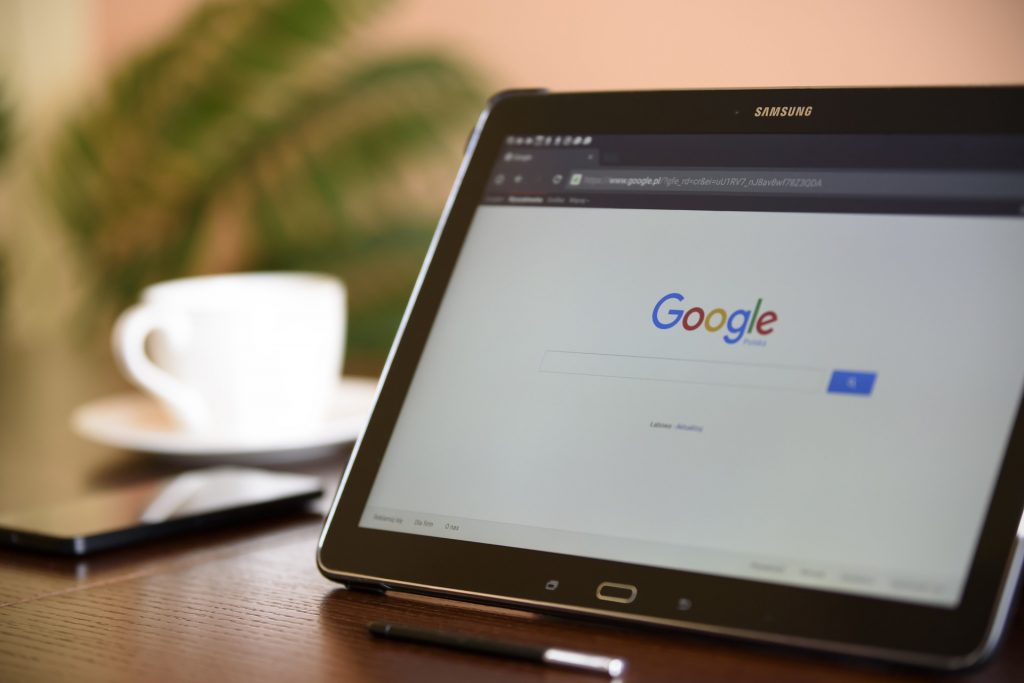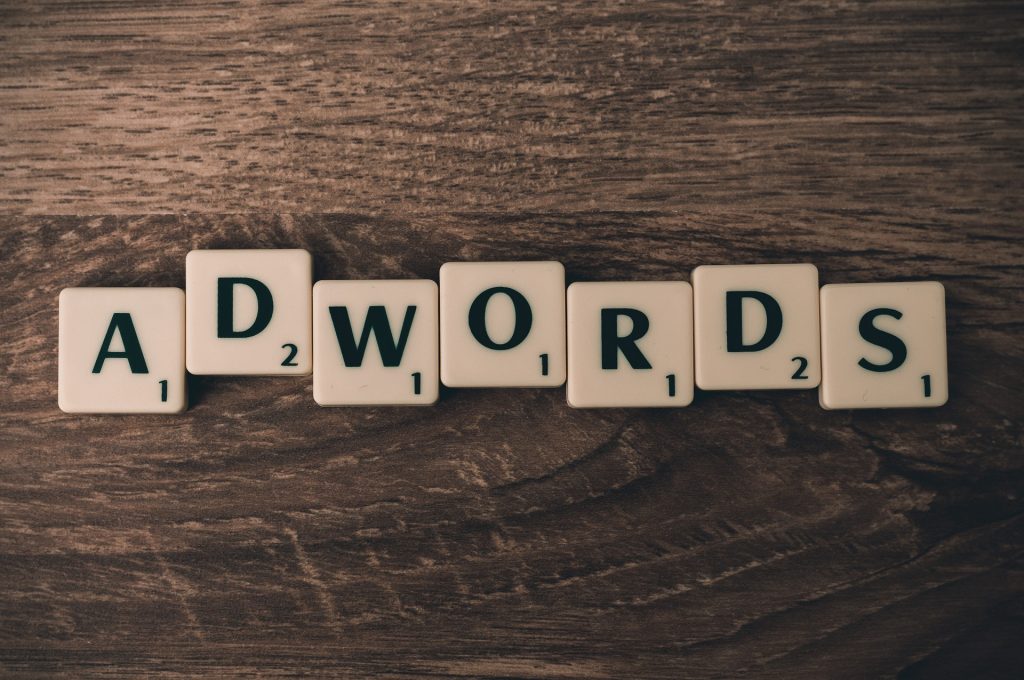
Pay-Per-Click advertising fundamentals
Pay Per Click (PPC) advertising is a marketing tactic where an advertiser is charged each time a consumer clicks on their ad. It’s a way to buy visits to your site as a complementary strategy to your SEO marketing.
PPC is a good tactic but shouldn’t be the only online marketing tactic you’re investing time or money into. Your integrated marketing strategy should have a healthy mix of free and paid opportunities.
How does PPC work?
PPC ads show above search results, meaning they use keywords or brand names to tie to those search queries. People can click your ad and be directed to your website, and you are then charged for that click.
Most PPC platforms, like Google Ads and Bing Ads, operate on a bid platform where you say how much you’re willing to pay for a click to your site. Some ads do run on a Cost Per Impression (CPM) model, meaning you’re paying for your ad to just display, even if no one takes action.
Cost Per Click (CPC) or PPC, gives you a much better ROI as you’re only paying when a searcher takes an action, as in clicking your ad.
PPC is done auction-style, where you offer up a bid to get that click, whatever you value a click to your site as. The highest bidder gets first placement, the second highest bidder gets the next ad slot, and so forth. Let’s say we have two food tour companies in Denver and they both decide to run PPC ads. One company, Tasty Denver Eats, bids $5 for an ad with the keyword term “Denver food tours,” whereas their competition, Mile High Food Tours, values clicks to their site at $2.
Tasty Denver Eats wins the first position. Now, that doesn’t mean that they’re actually going to be charged $5 for every click to their site. Tasty Denver Eats might have only spent $2.25 for that click as they charge by the lowest bid.

Why invest in PPC ads
Organic or search traffic is to your site, but sometimes it pays to invest in PPC ads. Let’s talk about four reasons PPC is a valuable marketing tactic.
- You gain immediate visibility in the search engines.
- It improves your brand awareness and reaches new audiences.
- You get the first position in the SERPs, making it more likely customers will click on your link.
- It brings in qualified traffic as more often than not, those clicking ads are ready to buy.
PPC visitors are 50% more likely to purchase something than organic visitors. Investing in PPC can also have indirect impacts on your SEO and site’s ranking.
Getting started with PPC ads
With more than 2.3 million searches on Google every single second, it can be a race to get that traffic to click on your links. Get a head start driving that traffic to your site when you get started with PPC advertising.
Pick your platform
The big players are Google and Bing when it comes to search advertising. Most advertisers choose to start with Google Ads and then copy their winning ads over to Bing. Google Ads has about 65% of the market share and Bing Ads has 33%.
Research keywords
By having a strong SEO strategy in place, you should have a good headstart on generating keyword terms for your ads. Your keyword term should follow the same best practice as it does on your site: activity + location. You should also test ads that have your activity and location terms as well as your brand name.
You have three options for keyword matching for ads: exact match, phrase match, and broad match.
- Exact: Ad displays if the search term has that exact keyword in that exact order. Your keyword term is “Downtown Denver food tours.” Your ad will only show if the search query is “Downtown Denver food tours.”
- Phrase: Ad displays if the search term has the same order but can have additional terms. For example, your keyword term is the same “Downtown Denver food tours.” Your ad could show if someone searches: affordable Downtown Denver food tours night.
- Broad: Ad displays if the search term contains any of the words or phrases and in any order. Broad match could let your ad show for variations or synonyms of your term, like showing for the singular tour instead of tours. Your ad would display for the same keyword as above but even if the searcher looks for: food tour Denver.
Selecting your match essentially tells you how big of an audience you’ll have for your ads. Exact match narrows your pool to a specific audience whereas broad provides more opportunities, though sometimes broad match can be too broad and searchers may come to your site only to realize you’re in Denver and they’re looking for food tours in New York City.
Similar to social media, we want to focus on quality traffic. It’s easy to be excited about the large amount of traffic we have coming to our site, but we want to make sure those visitors are quality and interested in the product or making a booking. You can always start with broad match and phrase match to drive traffic and then learn more about how people find you and what keywords help them convert, then optimize your ads around those keyword terms.
Negative keywords
Another way to optimize your ads is to use negative keywords to make sure your ads are only displaying for the right searchers. Our friends at Tasty Denver Eats offer fun food tours but they don’t have options for gluten-free guests. They could add “gluten-free” as a negative keyword for their ads so their ad won’t show to searchers looking for: gluten-free Denver food tours.
Using negative keywords can help qualify your traffic and ensure searchers have a good experience with your site as you match their search query exactly.
Google Ads offers a free tool, Keyword Planner, to help you brainstorm keyword terms and phrases your ads could use and their associated search volume.
Structure your account
Your account structure can make managing your ads a dream or a nightmare. There are a few different strategies when it comes to structuring your account and you have to decide which one makes the most sense to you. The way you set up your account starts with the campaign level.
The campaign is your top-level navigation for your ads. You could break these out by product, perhaps you offer walking tours, biking tours, and Segway tours. Each tour category could be its own campaign.
Next is your Ad Group, a subsection of a campaign. Like in the example above, one of our Ad Groups from our Walking Tours campaign is Denver Walking Tours. That means all the keywords and ads are related to promoting our Denver Walking Tours. From there, you link the right keyword terms to your ad group and develop your ad copy.
Set your daily budget
Google Ads runs on a daily budget model. You specify how much you’re willing to spend per day on the campaign level. In our example from the previous section, each campaign, Walking Tours, Biking Tours, and Segway Tours, has its own daily budget.
It’s a best practice to spread your budget throughout the entire day. And, just because you’ve budgeted $200 for your Walking Tours, that doesn’t necessarily mean you’ll be spending that $200 every single day. Your daily budget is the limit Google can spend, but how much you actually spend depends on how strong your ad copy is and how many people are actually clicking your ads.
Develop ad copy and identify landing pages
Know what you’re going to say and where you’re going to send those visitors clicking on your ad. This is where persona research comes into play where you want to get in the mindset of your audience and frame the ad copy around their needs.
While doing that, you also need to know where you’re going to be sending these searchers – to a specific activity page, a discounts and offers page, a gift certificates order form, or a blog post you want to drive traffic to.

8 PPC ad copy tips and tricks
- Use high performing keywords: Using your best performers from your site in your ads is a no-brainer.
- Focus on the headlines: We’re not supposed to judge a book by its cover, but we often do, and we also often judge links by their titles. Your ad description is a complement and helps convince the searcher to click your link, but your headlines are the most important part of your ad.
- Mirror the search query: Keywords are important, but try and match the searcher’s query as closely as possible. If you know people are more likely to search for “winery tours lunch Napa Valley,” then your ad copy should include something like “Looking for exceptional winery tours with lunch in Napa Valley?” Instead of using “winery tours Napa Valley with lunch.”
- Copy your winning copy: Do you have a bit of copy on your site like a tagline or sentence you and your customers just love? Reuse it in your ads!
- Make it about them: Ads should be written in second-person POV or implying that the copy is speaking directly to the reader. Let’s go back to the Napa Valley winery tours example. Sample A makes the reader the subject and makes it all about them. Sample B makes you the subject and is all about you.
- Experience the best of Napa Valley’s wineries on an award-winning tour
- We offer the best experience with our award-winning tour of Napa Valley’s wineries
- Must have a CTA: Tell the searcher to click your ad by using phrases like: Book now, reserve your rental, explore our tours, and learn more.
- Include a price: If one of your unique selling points is that you’re the most economical tour company in your area, be sure to call attention to that in your ad. The inverse is also true, if you have a more expensive experience and want to discourage bargain-hunters from clicking your ad.
- Use qualifiers: Qualify your traffic by specifying if you only do private tours, or this offer is only valid for groups, or guests must be older than 21 because you do brewery tours.
Tracking is set
Make sure you’ve linked your Google Analytics and Google Ads accounts to properly track your customers from clicking your ad and then where they go on your site.
Keep an eye on the quality score
Bids are an important part of determining if your ad is shown for a certain search query, but another important aspect of your PPC performance is your ad’s quality score. Quality score looks at your ad copy and keywords, and your ad copy and the landing page copy. Are they relevant to each other? Does the ad and landing page match the keyword term your ad is going after?
Quality score was put into place to stop spammers and scammers from bidding high on unrelated searches just to drive traffic to their site. The score runs from 1 to 10, with 10 being the highest score possible.
Ads runs a balancing act between bids and quality score when it comes to serving ads. Let’s go back to our Denver food tour example. Tasty Denver Eats bid $5 on their keyword term and Mile High Food Tour only bid $2, but maybe Mile High Food Tour has a quality score of 7 and Tasty Denver Eats is falling behind with a score of 3. In this scenario, Mile High Food Tour might win the first position as their ads are performing better and are known to be more relevant.
Test and refine
PPC ads aren’t a set it and forget it tactic, it requires regular maintenance and updates. By testing and refining your ad copy, extensions, CTAs, and so on, you’ll have a better understanding of what ad copy works for your brand and your target market.
Be sure to replicate successes by implementing winning strategies to other Ad Groups or Campaigns, and be sure to pull poor performers in terms of clicks, conversions, and quality score.

PPC best practices
Now that you know how PPC works and how to get started, let’s do a quick review of five best practices when it comes to PPC.
- Use all your text lines: In 2016, Google AdWords announced Expanded Text Ads which gives you more text for your ads. Text ads two headlines with a 30-character limit and 80 characters in your description field.
- Use extensions: Ad extensions give your ad more real estate in the SERPs and highlight specific actions or business information. Extensions include sitelinks, location, price, promotions, and much more. Pick the right extensions for your ad and brand.
- Rotate ads: With multiple ads, you’ll want to set them to rotate and optimize for conversions. This allows Google to serve the right ad to the right customer based on time of day, query, demographic info, and even past search behavior.
- Use bid adjustments: Decide if you want to manually update bids based on campaign performance or let Google take care of it for you.
- Optimize for negative keywords: Make sure you’re not paying for clicks from irrelevant or unqualified traffic by using negative keywords. It’s important to know what keyword terms convert as well as what terms are hurting your campaigns’ performance and excluding your ad from search results for those terms.
How to measure your PPC performance
You’re ready to create some great ads so let’s make sure you’re ready to measure their performance and understand your advertising ROI. The four metrics to keep a close eye on when running PPC ads are: Clicks, impressions, conversions, and spend.
- CTR: Your Click-Through Rate shows you how interested searchers are in your ads. CTR is calculated as clicks/impressions (how many people saw your ad).
- Conversion rate: Your conversions shows you how many people clicked on your ad and completed a booking or other action. Your conversion rate is calculated by conversions/clicks.
- CPC: Your Cost Per Click is your total spend/clicks. This shows how much you’re averaging in spend for each click.
- CPA: Your Cost Per Acquisition is your spend/conversions, or how much you spent to acquire that customer.
Advertising is constantly evolving and by having a good understanding of your brand, your market, and how your customers interact with your ads, you can find success in online advertising.

